its paid sponsors, whose products you need!
“Stay ‘unreasonable.’ If you
don’t like the solutions [available to you], come up with your
own.”
Dan Webre
The Martialist does not
constitute legal advice. It is for ENTERTAINMENT
PURPOSES ONLY.
Copyright © 2003-2004 Phil Elmore, all rights
reserved.
Pocket Stick Striking
By Phil Elmore
In a previous article on
carrying pocket sticks, I spoke at
length about the utility of these little implements of self-defense. I
did not, however, go into detail on the specifics of striking with them.
I believe striking with pocket sticks, koppos, kubotans, and yawara is
fairly intuitive, but we’ll take a closer look at pocket stick force delivery
nonetheless.
What we won’t cover
here are joint locks and other compliance techniques that use the pocket stick
for leverage. These are too complicated for pragmatic street defense and
too involved for the average person’s use. We also won’t cover using the
pocket stick as the handle of a key flail. Flails, even when performed
with a gigantic wad of keys on the end of the stick, simply aren’t effective.
A flail to the eyes has some value, but this is nothing you can’t accomplish
with a wrist flick or bil jee (finger jab) to the same target.
For the sake of simplicity we will focus on two striking
methods: forward thrusts and reverse hammer strikes. The forward
strike is one in which the pocket stick is held like a saber and used with a
forward thrust straight into the target. This is a good linear
technique, though the saber grip is not the strongest for a pocket stick.
When gripping the pocket stick like a fist load, it will
project from one or both sides of your hand. The most powerful blow you
can deliver using this grip is a downward hammerfist strike. (You can
also deliver upward blows if sufficient stick length projects from the top of
the fist, but I favor the reverse strikes because they are stronger).
Those same downward hammerfist strikes can be delivered laterally as
backhands.
The nature of the pocket stick
as a daily companion implies that you’ll draw and use it from virtually any
posture. I won’t recommend specific modes of carry or draw. I
think these are very individualized and therefore up to you to discover and
practice through experimentation. This isn’t rocket science, after all.
It’s a tiny stick that you carry until you grab it and poke someone with it.
If given the luxury of preparing for an assault, you may choose
to adopt a specific ready posture. I’ve used variations on the following
stances to deter aggressive street people. These are nothing more than
interpretations of the
double wu sao guard of Wing Chun
or the staggered “fence” or “de-escalation” Reality Based Self Defense
stances. In one, the stick is in a forward grip for thrusts, while in
the other it is readied for backhand hammer blows. The weapon is
forward, where it should be, between you and the assailant.
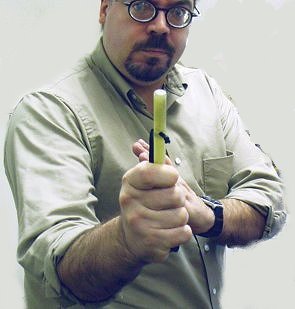

Forward thrust and backhand
hammerfist ready postures. The forward thrust would
normally be oriented more towards the assailant’s eyes than vertically as
shown here.
It goes without saying
that you’ll only use a weapon to hit someone if you are justified in using
multiplied force in defense of yourself or someone else. I can’t address
specific scenarios here, so we’ll stipulate that you have a need to and are
justified in planting the end of your stick in another person. This will
be done to damage or deter the attacker. The mechanics of striking
someone while protecting your own vital areas are outside the scope of this
article, but you’re not going to learn the totality of self-defense reading a
single online description. What we can cover are the vulnerable points
you should or could target in defending yourself.
WARNING! The techniques
described are potentially lethal and could, at the very least, cause severe
or permanent injury. The following is presented for information
purposes only. The Martialist and its staff cannot be held
responsible for the misuse of this information. The guidelines given
do not constitute legal advice.
Tak Kubota, who popularized the kubotan keychain, offers the
following diagram of striking points in his
manual for the device:
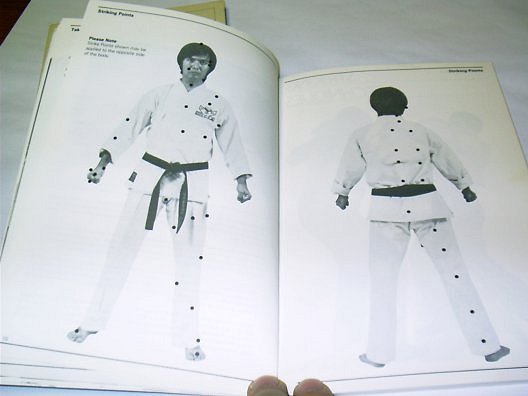
We’re going to keep things a little simpler than that.
The head and neck are the most vulnerable to pocket stick strikes. Using
either the saber or hammer grip, you can drive the pocket stick into the
general zone of the eyes, into the cheeks) less vulnerable to quite painful),
under the chin (and anywhere in the neck area), and into the hollow of the
throat. You can also jam the stick into an ear or into the temple, with
varying results. Do what you must.
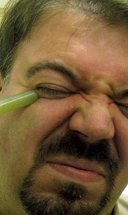

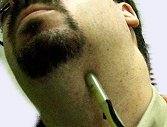
Eye, cheek, and neck targets. Don’t be afraid to put the stick
straight
through spectacles.
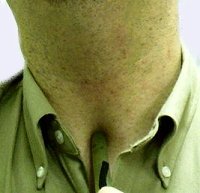
The hollow of the throat, which is
very vulnerable (but a small target).
Strikes elsewhere on the body create varying degrees of pain
and debilitation. I cannot guarantee that any given strike will “stop”
an attacker, but there are a number of body options. Blows to the side
of the lower torso or to the armpit cause pain, as do strikes to the
pectorals, to the biceps, inside the elbows, and to the gut. Kidney
shots are unpleasant, too, as are strikes to the thighs, shins, and calves.
Obviously, a shot to the groin will generate some notice.
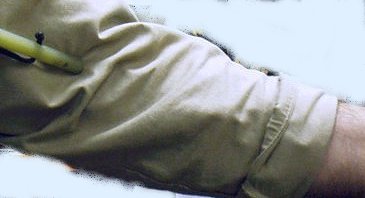
Striking area inside the elbow.
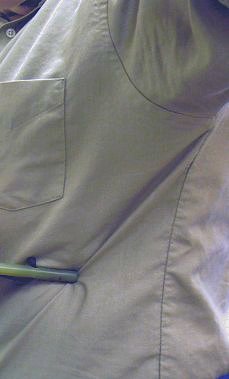
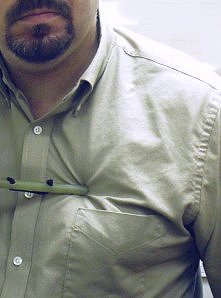
The sides of the body under the arms and the
pectorals are also targets.
When striking a grasping or grabbing limb say, the hand or arm of someone
poking you, grabbing your shirt, or reaching into your car the backs of the
hands are quite vulnerable, as are the areas of the arm inside the wrist and
forearm. One technique used against a “bear hug” is to grind the
knuckles of your hand into the back of the attacker’s exposed hand. This
is very painful with just knuckles but becomes even more so when grinding with
a pocket stick.
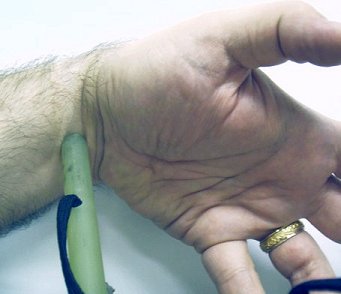
Inside the wrist is one good target area.
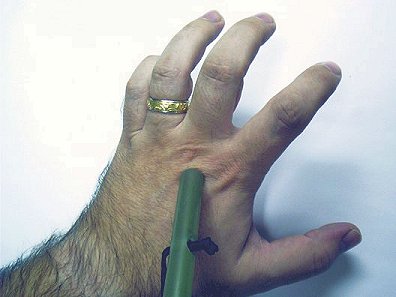
The back of the hand is vulnerable.
The techniques shown with sticks here will obviously work with any small,
similarly shaped object. These include small flashlights as well as pens
and pencils. Any item that is sharp like a pencil will penetrate flesh
if used with sufficient force, so keep that in mind. A simple pressure
strike with a kubotan can become a stab with the tip of a ball-point pen.
A pocket stick is a remarkably powerful tool in a very small
envelope. It is potentially lethal and must be considered a deadly
weapon, even if it is not used to deliver fatal techniques. The average
citizen with a little training and a pocket stick is well equipped for many
self-defense scenarios.
The pocket stick is not a magic wand, but it does a lot for
such a simple tool.
